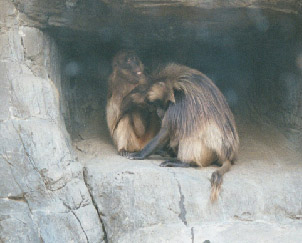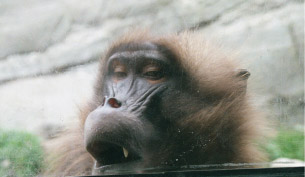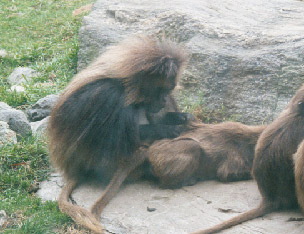The average body mass for an adult male gelada baboon is around 20 kilograms, and for the female it is between 13 and 16 kilograms. The males have a large mantle or mane surrounding their head. On the chest of both sexes are hairless patches of skin that are heart shaped in males and hourglass shaped in females. Surrounding this skin are bumps of skin that swell up for the female during estrus. This area on the chest mimics the sexual skin during estrus probably because since the gelada baboon sits for long periods while it forages for food, the male would have a difficult time seeing the perineum. At the tip of the tail there is a tuft of hair.
RANGE:
The gelada baboon is found in the country of Ethiopia. This species lives in montane habitats including scrubland, grassland, and some types of woodland. The gelada baboon does not live in elevation above 4500 meters. Because this species sleeps on outcroppings of rocks, it needs rocky areas in its habitat.





